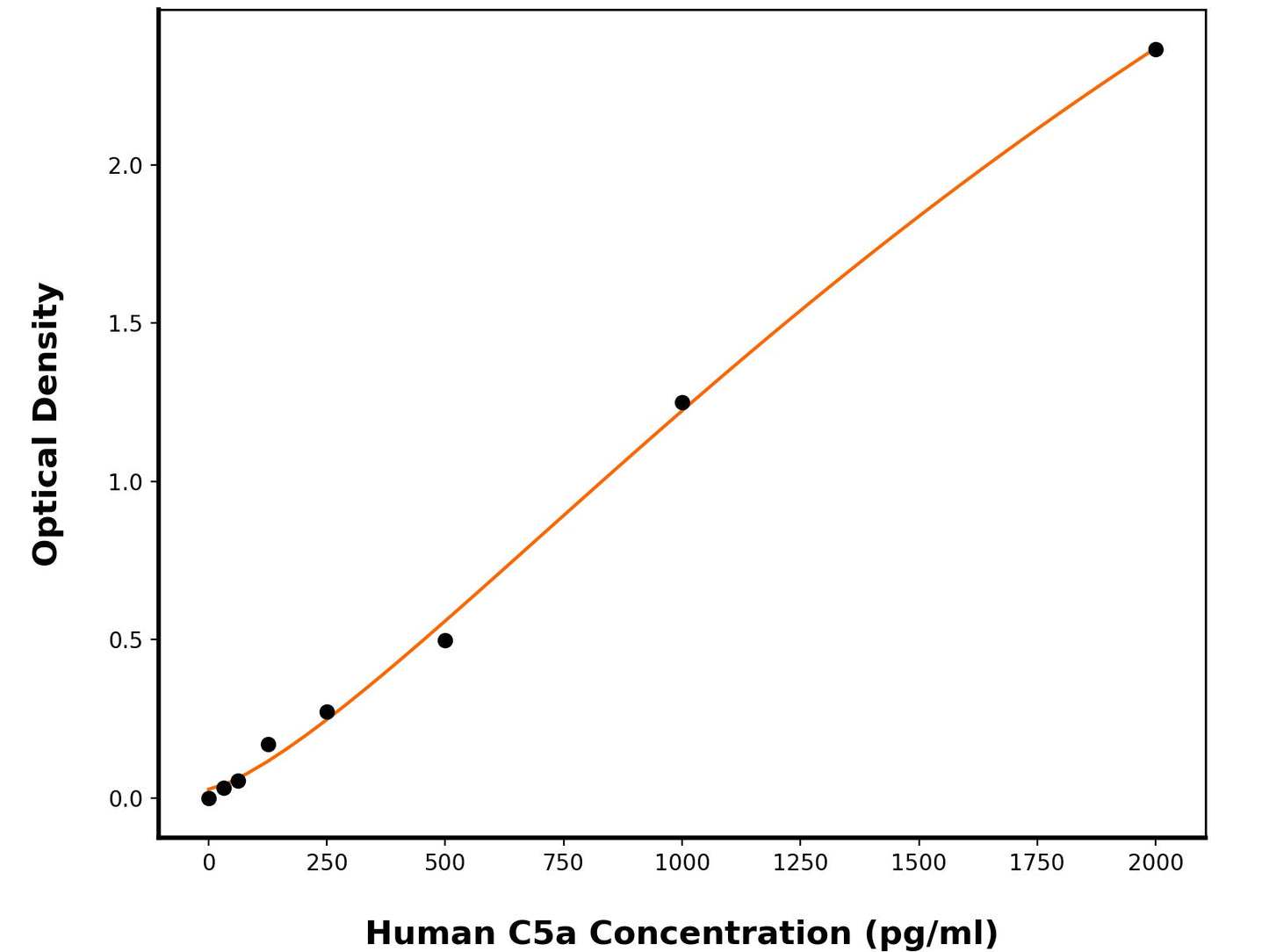1
/
of
1
Human Complement Component C5A ELISA Kit
Human Complement Component C5A ELISA Kit
This ELISA kit is designed to detect Human Complement Component C5A. The assay plate has been pre-coated with mouse anti-Human C5a monoclonal antibody. When the sample containing C5a is added to the plate, it binds to the antibodies coated on the wells. Then, a horseradish peroxidase conjugated mouse anti-Human C5a Antibody is added to the wells and binds to C5a in the sample. After washing the wells, substrate solutions are added, and the color intensity is directly proportional to the amount of Human C5a present. The reaction is stopped by adding an acidic stop solution, and the absorbance is measured at 450 nm.
Catalog No:
BPE380
Regular price
$624.00 USD
Regular price
$480.00 USD
Sale price
$624.00 USD
Unit price
/
per
2 weeks
Couldn't load pickup availability
Product Details
Species Reactivity
Human
Sensitivity
12.81 pg/mL
Detection Range
31.25-2000 pg/mL
Sample Type
Serum, plasma, cell culture supernates
Incubation(s)
3.5 hour(s)
Research Areas
Immunology, Metabolism, Cell Biology, Signal Transduction
Background
C5a is a protein fragment released from complement component C5. This 74 amino acid peptide in humans is generated by the cleavage of C5a convertase on the C5 α-chain during the classical, alternative, and lectin pathways of complement activation. The structure of C5a includes a core region consisting of four, anti-parallel alpha-helices held together by three disulfide linkages and a structured C-terminal tail, and C5a is rapidly metabolised by carboxypeptidase B to a 73 amino acid low activity form, C5a des-Arg. C5a is an extremely potent proinflammatory mediator, as well as a potent chemotactic factor for neutrophils and other leukocytes. It causes histamine release, increases in vascular permeability, induces several cytokines production from leukocytes, enhances neutrophil-endothelial cell adhesion, and augments the humoral and cell-mediated immune response. C5a is quickly metabolised by carboxypeptidases, forming the less potent C5adesArg. Acting via a classical G protein-coupled receptor, CD88, C5a and C5adesArg exert a number of effects essential to the innate immune response, while their actions at the more recently discovered non-G protein-coupled receptor, C5L2 (or GPR77), remain unclear. The widespread expression of C5a receptors throughout the body allows C5a to elicit a broad range of effects. Thus, C5a has been found to be a significant pathogenic driver in a number of immuno-inflammatory diseases, making C5a inhibition an attractive therapeutic strategy. C5a is a strong chemoattractant and is involved in the recruitment of inflammatory cells such as neutrophils, eosinophils, monocytes, and T lymphocytes, in activation of phagocytic cells and release of granule-based enzymes and generation of oxidants, all of which may contribute to innate immune functions or tissue damage. Accordingly, the anaphylatoxin C5a is implicated in a variety of diseases such as rheumatoid arthritis, systemic lupus erythematosus, reperfusion injury, Alzheimer's disease, and sepsis.
Shipping Condition
Shipped on cold gel packs.
Storage Condition and Shelf Life
This product can be stored at 2-8C.
Analyte
Complement Component C5a
Regulatory Status
For Research Use Only

